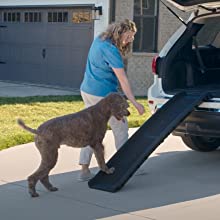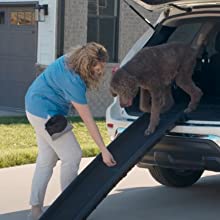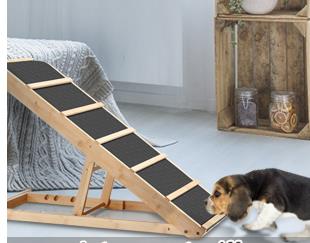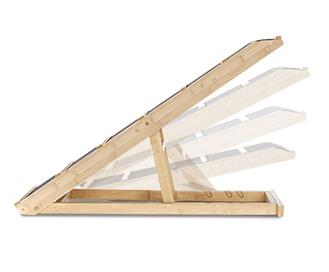Dogs are our devoted and essential companions, but communication with them can be difficult sometimes. This is where our assistance comes in handy, especially in their development of new skills, such as using a dog ramp. Dog ramps are helpful for puppies, who may have trouble reaching high places or climbing onto cars, beds, or SUVs. If you want to train your dog to use a dog ramp, here are some tips to help you get started:
1) Introduce the ramp to young dogs gradually.
Younger dogs do not suffer from the age related vision and arthritic changes that an older dog may experience; therefore they are more confident in their footing. Early introduction allows your dog to have the skills and experience to use the ramp when they will benefit the most from it. Dogs may be cautious of new objects, so it’s important to take things slow. Let your dog sniff and explore the ramp at their own pace, and consider placing treats on each step to encourage them to climb.
2)Begin teaching by laying the ramp flat.
By allowing your dog to walk over the ramp flat, it gives them a chance to acclimate to the texture and feel of the ramp without the difficulty of height.
3)Guide your dog up and down the ramp.
When your dog is still new to the ramp, it’s useful to provide guidance. Place your hand on their back or belly to support them as they use the ramp, and gradually reduce your assistance as they become more comfortable.


4) Reward good behavior.
Always use positive training. Positive reinforcement is a powerful motivator. Use food to lure your dog onto the ramp and reward when he gets one foot, two feet, etc. onto the ramp. When all four feet are on, lure across the ramp rewarding along the way.
5) Make the ramp more appealing.
Put your dog’s favorite toy or blanket on the top step of the ramp, or use treats to lure them up. This encourages their curiosity and makes the experience more enjoyable for them.

6) Add height gradually.
Gradually add more height to the end of the ramp until the end of the ramp is the same height as your vehicle. If at any time you dog struggles with a height increase, just lower the height to where your dog was successful. Build more confidence at that height before increasing the difficulty again.

In conclusion, teaching your dog to use a dog ramp requires patience and a gentle approach. Through positive reinforcement and gradual introduction, your dog will soon be able to navigate ramps with ease. Remember to use treats and praise to reward good behavior, and to provide guidance when necessary.
